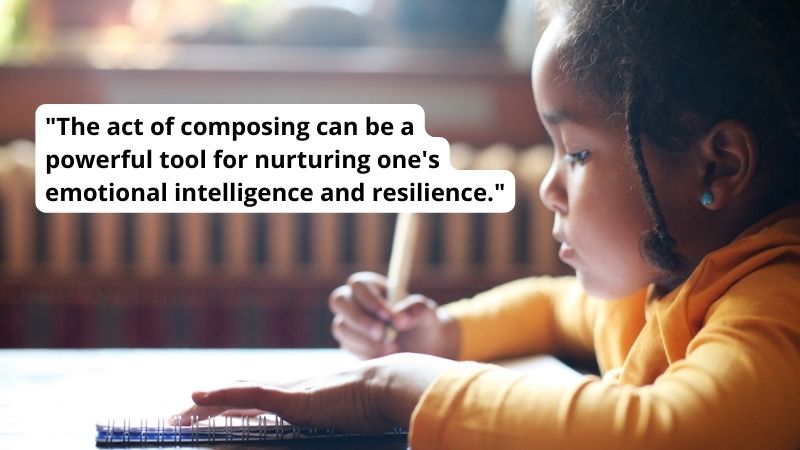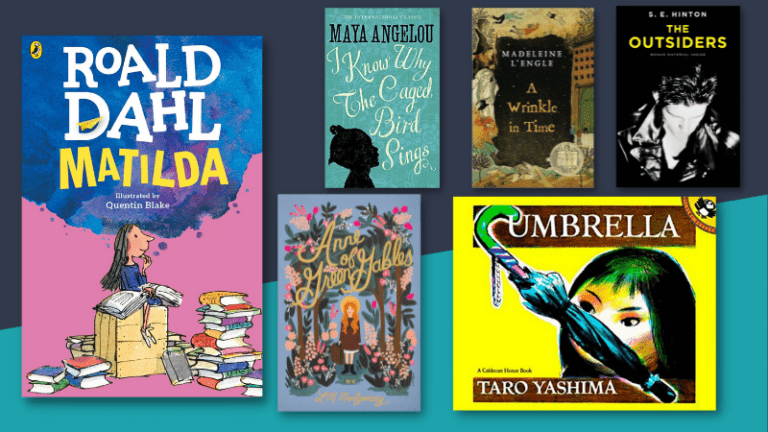Emotional intelligence, resilience, social-emotional learning—these terms are trending on social media and at the forefront of initiatives in many of our schools. For a critical reason: the pandemic has put children under stress and created in many children and adolescents some form of trauma.
Addressing kids’ social-emotional well-being in the classroom is not merely important; it is critical. And this is not just a post-pandemic need. Becoming emotionally aware and resourceful is a life skill. Dr. Susan David, world-renowned author and researcher, states that “the way we navigate our inner world —our everyday thoughts, emotions, and self-stories— is the single most important determinant of our life success.”
The bright spot in all this for us teachers? Integrating social-emotional learning into the school day makes our lives easier, not harder. I promise. It is not going to feel like one more thing loaded on your plate. Once you do it, you’ll feel something has actually been taken off your plate. Why? Because when you and students begin to attune to what is going on inside and use it as a source for creative and intellectual expression, the learning culture among peers becomes lighter, more gentle, more compassionate. You’ll find that writing encourages social-emotional growth.
Write What You Know—And What You Feel
As a teacher of writing for 26 years, I have found that the act of composing can be a powerful tool for developing one’s emotional intelligence and resilience. Students who are able to access their thoughts, emotions, and self-stories and then put them on the page literally and figuratively give voice to their selves. Over time they come to rely on writing to communicate, navigate, and come to terms with what life brings. Writing even helps students from the most chaotic backgrounds feel they can assert some measure of control and organize their experiences.
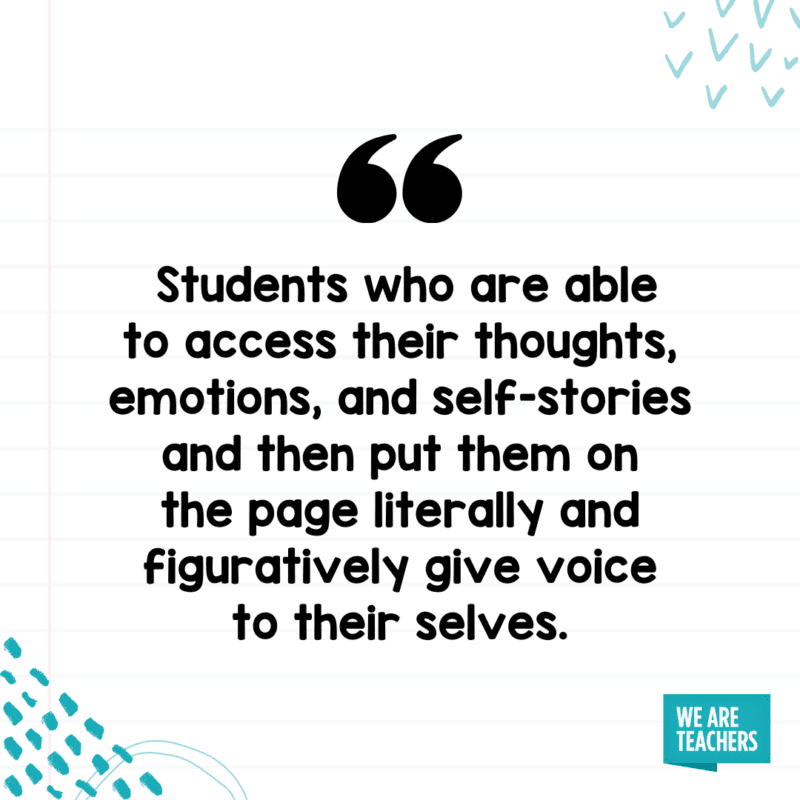
What I was surprised to discover is that when students draw upon the social-emotional learning their teachers have explicitly and implicitly taught, the quality of their writing improves. The very experience of learning self-management, self-awareness, social-awareness, relationship skills, and responsible decision making (CASEL competencies) results in stronger writing. It makes sense, after all. Writing, no matter how formal or informal, begins from within. So, the more emotionally intelligent the writer is, the more powerful the writing is.
So, let’s explore just a few ways you can integrate the mutually beneficial pairing of writing and social-emotional learning.
[contextly_auto_sidebar]
Fiction Writing and Self-Management
Let’s begin with the CASEL definition of self-management: “The abilities to manage one’s emotions, thoughts, and behaviors effectively in different situations and to achieve goals and aspirations.” As students learn to navigate difficult emotions especially in challenging situations, writing can be extremely helpful. This is when I love to turn to the genre of fiction. We know great truths are told in pieces of fiction. Writers often find themselves learning more about emotions and working with them when doing so with a “made up” character.
Begin by asking students to create a character but pick a familiar problem that the character can work through.
In one example, a very new kindergartener, home during the pandemic, felt lonely. He chose to write a story with Black Panther as the main character. In the story, Black Panther met a chrysalis. The story read, “Black Panther waited and waited and waited and waited. One day, a beautiful butterfly was born. Black Panther asked him to be his sidekick and the butterfly said yes.”
Can you hear how this young writer is almost giving himself advice? “Wait, be patient, and you will be together with others again.”
In this next writing example from an upper grade, the student was having a hard time getting along with an older brother. She loved him so much, but the older brother saw her like a pesky younger sister. So, she wrote a story of two sisters, Chloe and Casey, who had a tense relationship. In this story, though, Chloe shows up for the younger sister Casey when things get difficult.
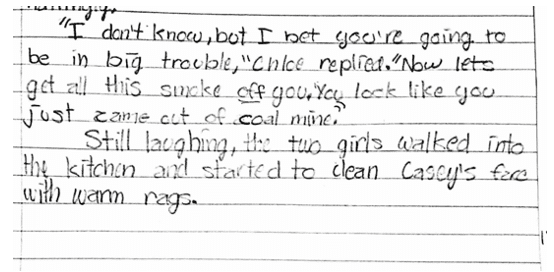
This student author shared the story with her brother. That brother became much more aware of how he was treating her, and they were able to resolve some (not all) of the tension.
So, one way to integrate SEL and writing is by taking real-world challenges with fictional characters that successfully work through the hard parts of relationships.
Personal Narratives and Self Awareness
CASEL defines self-awareness as: “The abilities to understand one’s own emotions, thoughts, and values and how they influence behavior across contexts.” Sometimes looking at emotions head on and writing stories of moments when those emotions were predominant is the healthiest way of building self-awareness. That is to say, write personal narratives.
To find those personal narratives that dig deep into building emotional intelligence, it can help to use a tool like the Mood Meter from Yale’s Center for Emotional Intelligence or this tool from my friend and educator Liz Pappas (published by Benchmark Education Company).
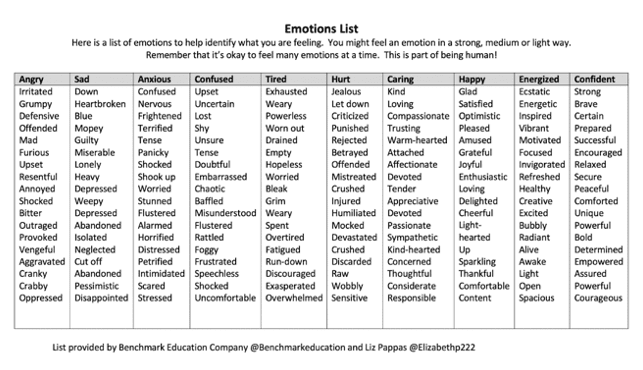
One of the most important parts of becoming more emotionally intelligent is to name emotions at the granular level. People generally name just a few general emotions such as angry, stressed, or overwhelmed. When people can drill down and name more specific emotions, and then examine times they have felt that way, they learn to manage their moods and build resilience. And, of course, having resilience is the goal of SEL.
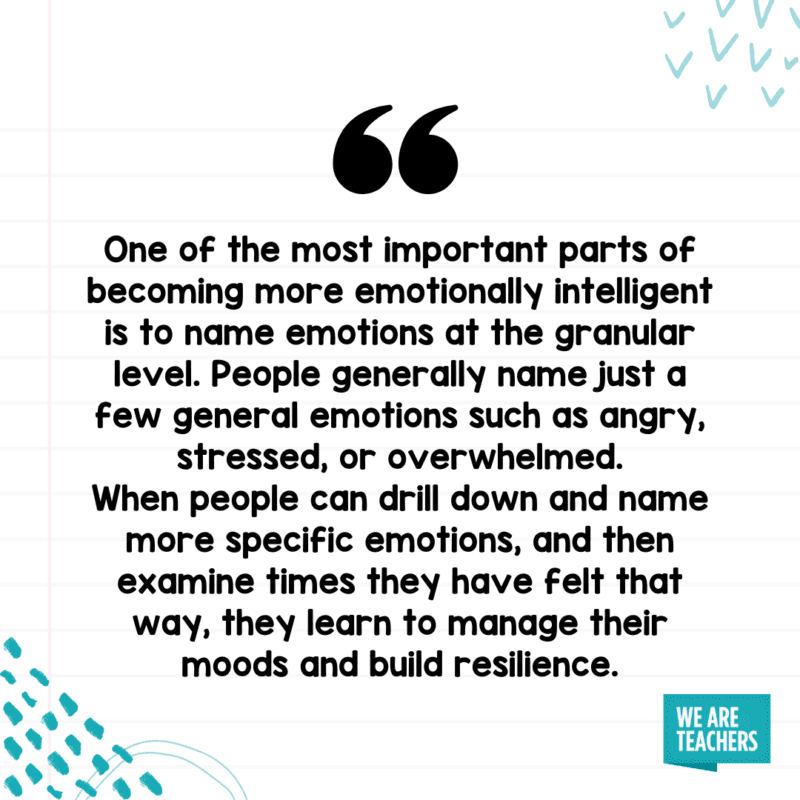
Model How to Select a Topic
To introduce writing personal narratives to students, ask them to use the Emotions List to identify a more specific emotion they want to write about. And then ask student writers to think of times they have felt that way. Those moments become the stories, and they are compelling for students to draft and refine because the memory matters.
You may wish to model this process by thinking aloud and perhaps jotting down a few words on chart paper. For instance, I might choose the word weepy and think of the time my oldest child went off to college in Dublin, Ireland. That experience can be the focus of my personal narrative. Students can then try the process you just model to come up with their own personal stories.
Once you sense students are ready for greater complexity, invite them to choose more than one emotion that they felt at the same time, because when you think about it, we are all feeling multiple emotions all at once. Not only does this invitation give students the permission to feel multiple emotions at the same time, it also gives students the opportunity to write about those emotions and then examine them once written.
Build in Time to Reflect
Examination is an integral part of the SEL. As part of the writing process of personal narrative based on emotions, add a little reflection time. Perhaps use these questions to guide students in reflection:
- When I reacted to my emotions, was that the best outcome for me? For others?
- When I felt these emotions, was I able to pause and decide what to do next?
- When feeling mixed emotions, how did I work through them all in healthy ways? What could I do differently the next time?
Or offer some writing-focused reflection prompts:
- What did I do to make my emotions really clear to my reader?
- How did I organize my writing to show the many emotions I was feeling?
- How was I courageous in my writing to show my true emotions?
Using personal narrative as a way of refining self-management skills is both rewarding and powerful.
How do you incorporate writing and social-emotional growth? Share in the comments below.
Want more articles like this? Make sure to subscribe to our newsletters.
Also, read Teachers and Parents Want SEL and Service Learning, But Schools Are Slow To Implement.

